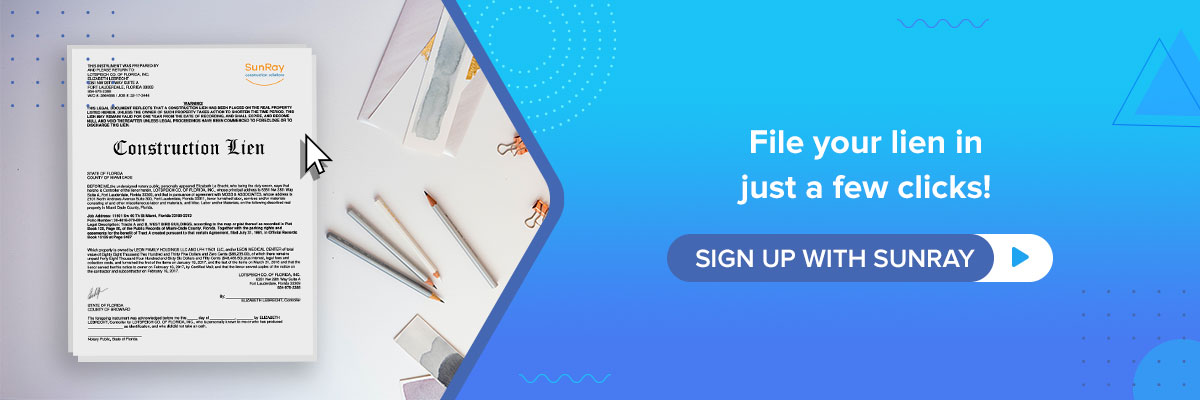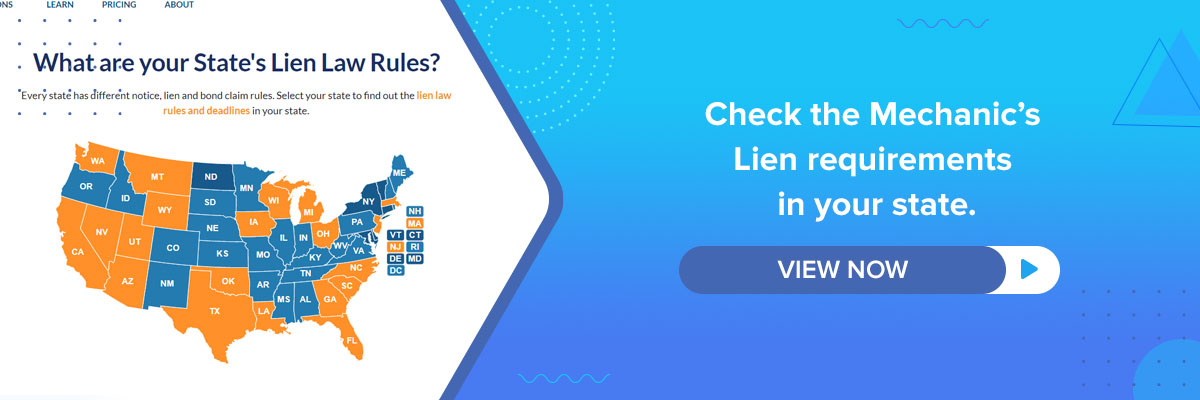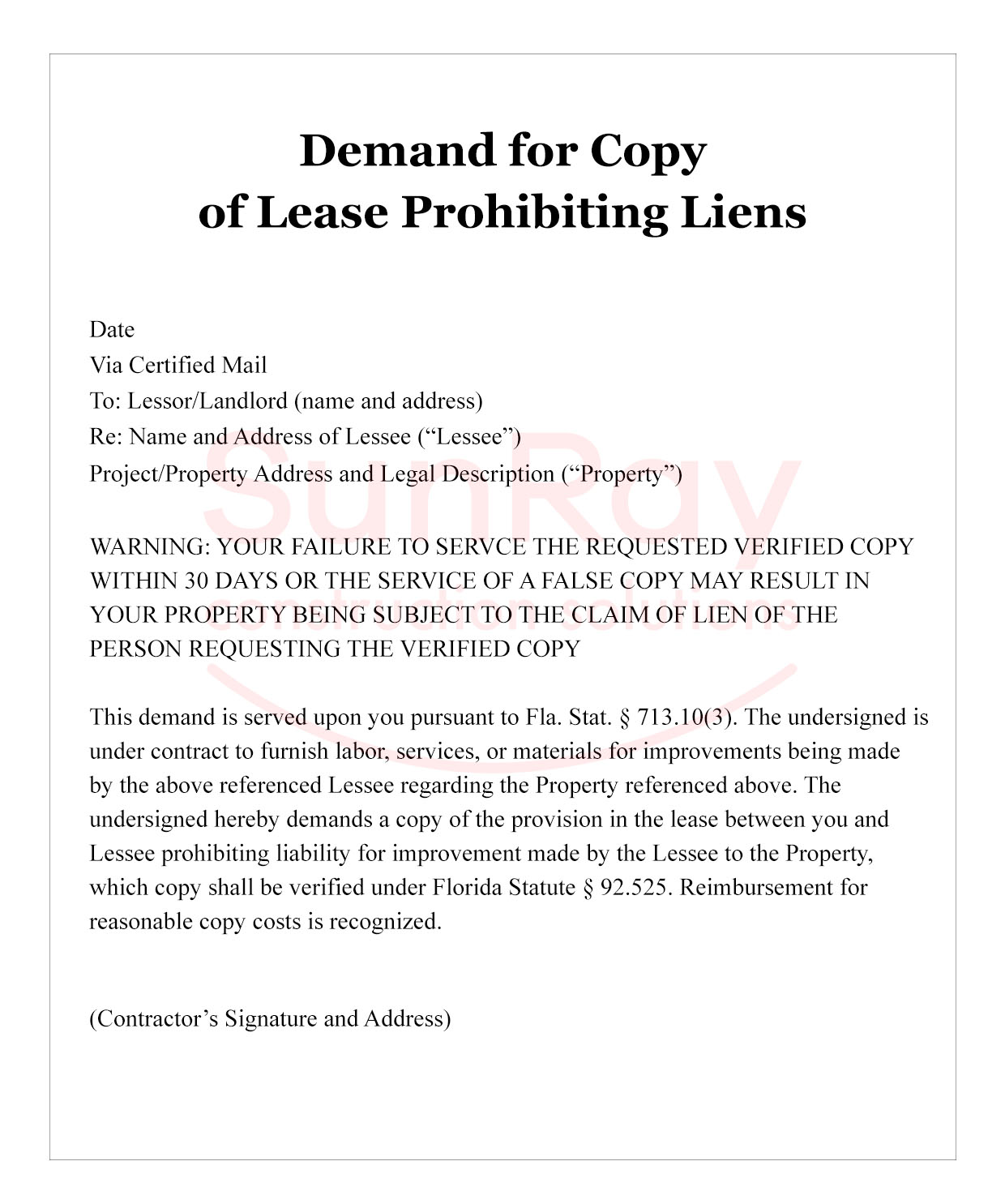Your Lien is Worthless…on Tenant Buildout Work. Here’s Why (and What to do About It) - Webinar
Understand why your lien maybe worthless on tenant buildout work, how to find out the party contracting with the general contractor, and why you should not rely on the Notice of Commencement.
Last updated:
Dec
22
,
2025
Published:
Mar 09, 2021
12 Mins
Read
If your lien is worthless on a tenant buildout work, how will you get paid? In this blog we will discuss why you should find out which party is contracting with the general contractor, why you should not rely on the Notice of Commencement, how to find out if the lease has no-lien language, what the Florida Statute says, how you can protect yourself, why as a subcontractor you should avoid pay-when-paid clauses on tenant improvement work, why you should send your Notice to Owner timely, and the format of the demand letter for a Demand for Copy of Lease Prohibiting Liens.
This blog was taken from a webinar presented by SunRay Construction Solutions and Alex Barthet. Alex is a board-certified construction lawyer who serves clients in Florida. We will discuss your lien and why in almost every instance it is probably worthless when you do tenant buildout work.
Why Is My Lien on Tenant Buildout Work Worthless?
The first thing you should understand is why your lien is probably worthless when you do tenant buildout work. Let us take a scenario where you are an electrician or a supplier to the electrician and you are doing work for a general contractor who has a contract with the tenant. Now, the general rule of law in Florida is that your lien attaches to whatever the interest in the property is that the highest person in the chain of contracts has to that property.
So, if you are a supplier to a subcontractor who has a contract with a general contractor who has the contract with the tenant. But that tenant’s interest in the property is not an ownership interest. It is merely a leasehold interest. So, as a supplier you can only get the rights that the highest party in your chain of contracts has with the property.
In the example above, that is a leasehold interest. This means that you do not have a right to an ownership interest because that is what the owner has. The landlord has the ownership interest and the tenant has only a leasehold interest.
1. Who is the party contracting with the general contractor?
The first thing you need to understand is, who is the party contracting with the general contractor for the work? This is going to be the primary driver at understanding whether or not you actually have Florida lien rights. So, what is legally termed as the “Fee Simple Owner.” That is the person or entity that actually owns the property. Did they sign a contract with the general contractor?
Now we will discuss an example where you would likely have lien rights. Maybe you are working in an office building and the landlord hires you to renovate common area space. So, you are not being hired by the tenant to improve their space. You are being hired by the landlord to improve common area space.
That is an example where you would likely have construction lien rights because your lien is probably good. Because you have a contract with someone who has a contract with the landlord, not the tenant. Sometimes we see that even in build-out work for specific spaces like a restaurant or an office space. The landlord will hire the contractor to do that work.
This is not seen very often though, because the landlord will give a tenant improvement allowance to give to the tenant who will then manage the contract for the build-out. But if the landlord is the one who builds out the space for the tenant, which means that the contractor is hired by the landlord, then in that case you would likely have good lien rights.

But again, it is most common to see the tenant as the contracting party.
2. Your lien generally attaches to the interest of the party contracting with the general contractor
As mentioned above, generally, your lien attaches to the interest of the party that contracts with the general contractor. What you need to figure out is who owns the property. You may find out that the general contractor has a contract with XYZ Corp.
3. Check public records in the county where the property is located
So the question is does XYZ Corp own the property or are they just the tenant? One way to figure that out, is to look in the public records and figure out who the owner of the property is.
4. Do not rely on the Notice of Commencement
You need to be careful that you do not exclusively rely on the Notice of Commencement. This is because in the Notice of Commencement (NOC), there is a spot that says “owner.” And what typically happens is that the owner of the property that is put in that space can be the tenant. Meaning that when the tenant fills out their NOC, that notice that has the spot that says owner, has the tenant’s name.
As a result, you may think that the owner is the party that is listed in the NOC, when in fact, it is the tenant that put their name there. So, be very careful. There are some NOC forms that do designate a spot for the owner and a spot for the tenant. But that is seen much less often than the one that just says owner.
If you see the word owner and you think the owner wrote that, and that therefore they must be the owner, that is not always the case. You have to look at the public records to see who the deed was issued to determine who the owner is.
Does the Lease Have “No-Lien” Language?
Now we will discuss what happens if there is no-lien language in a lease.
1. A landlord can protect their real property by including a “no-lien” provision in the lease agreement
If a landlord signs a contract with a tenant, most sophisticated landlords have a provision in their lease that says you as the tenant cannot hire anyone to do anything with respect to this property that gives them a lien right in the property. This is a pretty standard provision that most commercial leases have in them.
So, as a result, when that language exists in the lease, you are prevented from having a lien that attaches to the landlord’s property. That is what becomes the issue.
2. If so, your lien will only permit you to take over the lease, not sell the real estate
What this means is that that provision exists in the lease. Again, this is a document you do not have. You do not have a copy of the lease. It is not typically recorded in the public record. So, how do you even know if this provision exists? If it does exist, understand that if you prevail on your lien with respect to the tenant, you do not get to keep the property, sell it, or own it free and clear.
3. If you win, you can move in and pay rent
You get to own the lease and that lease allows you to move in and pay rent which is not what you are looking to do.
4. Usually if the tenant is not paying for construction, they are not paying rent
And almost always, we find that when a tenant cannot pay for the build-out work, they are also not paying the rent. As a result, they are getting evicted. Which means that even if you were to prevail and foreclose on the leasehold interest, which you can do, that lease might be terminated because the tenant is not paying the rent.
This is why having a lien on a leasehold is of very little value.

What Does the Florida Statute Say?
Now we will take a look at the Florida Statute so that you have a better understanding of what it says.
1. What Florida Statute 713.10 says
This text is found in 713.10:
If the lease expressly prohibits liens and a notice of same has been recorded in the official records of the county in which the parcel of land is located before the recording of a Notice of Commencement, and the notice includes the following:
- The name of the lessor
- The legal description of the parcel
- The specific “no-lien” language contained in the lease
- A statement that all or a majority of the leases expressly prohibit such liability.
If that exists then you will not have a construction lien on the landlord’s property. For example, lets us say that a landlord signs a lease with this no-lien language in it with a tenant. The tenant then hires a contractor to build out her space. The contractor hires you as an electrician to do work and you think that you can do this work like you do any other work because as a result, if you are not paid, then you can just go ahead and record a construction lien.
Then you can foreclose the lien and sell the office building or strip mall. But what happens is that if the landlord has recorded a copy of this notice of no lien language in the lease with the name of the lessor, a legal description of the parcel, the language in it and a statement that it exists in the lease.
Then even if you have lien rights, your lien rights only attach to the leasehold or the lease, not to the landlord’s property. So, you can look in the public record to see if this notice exists. We find it extremely rare that a landlord has not properly perfected their lien prohibition rights. Meaning that most landlords know how the statute works, they are very sophisticated, they have the language in their lease, and they record the document in the public record.
So, it is very rare that you will see someone messing this up. Now when it is messed up, there are big implications.
For example, there is a contractor who does over $1 million of build-out work for a tenant and they have not been paid. And it turns out that the landlord did not properly follow the steps in Chapter 713.10. As a result, the construction lien which was likely worthless even if they did, is now tremendously valuable because the entire strip mall can now be sold by the contractor, even though work was only done in one unit for a restaurant.
The lien now attaches to the entire mall which the contractor now has rights to, which is the landlord’s property. So again, it is not that it is impossible, but it is very hard to see this kind of situation.

Protect Your Rights with a Notice to Owner
Sending a notice to owner is the first step to secure payment on construction projects. Learn how a notice to owner Florida helps protect your lien rights and ensures you get paid.
Protect Your Payment Rights with Florida’s Most Trusted Notice & Lien Services
Notice to Owner – Secure your lien rights early. File your NTO now!
Notice to Owner Florida – Stay compliant with Florida deadlines. Send your NTO today!
Mechanics Lien Florida – Get paid faster. Start your Florida lien process now!
How Can I Protect Myself?
How can you avoid all this from happening and what are the steps you can take?
Before you sign the contract to do the work
One of the things you need to do is have a better understanding who the players are before you start the work and before you sign the contract. Because once you sign the contract, it becomes too late to start figuring this out.
a. Check to see which party hired the general contractor
When you are doing work for a restaurant, office space, shoe store, or a yogurt stand, whatever it is you are doing that is likely the work that would constitute tenant build-out work, you need to figure out who hired the general contractor – whether it was the owner or the tenant.
b. Search the public records to confirm the true owner
You need to search the public records to confirm who the true owner of the property is. So, you can Google “property appraiser Monroe County” or “Property Appraiser Duval County” and it will give you the property appraiser’s website. You can search by the address or the folio number and it will tell you who the current tax payer/owner is for that piece of property.
c. Search the public records for a “no-lien” affidavit
You can also search for this no-lien affidavit, the one that is supposed to be recorded to see if that language exists in the lease. You can Google the name of the county along with the words “county records.” For example, you can search for “Monroe County public records.”
Now the great thing about SunRay is that when you have us do this notice, we do all of these searches for you. You do not have to do them yourself.
And if you have us do your notices and you pick up the phone and call us or go online through our system. You can request the backup if you wanted to see it. So, they will take all of this information and use it when they craft the Notice to Owner. But again, if you wanted to understand how to do it yourself, this is what you need to do.
d. As a subcontractor, avoid pay-when-paid clauses on tenant improvement work
Now this next step is going to be very hard to do but it is really important as a subcontractor because you need to avoid pay-when-paid language when you do tenant build-out work. If your lien only attaches to the tenant’s interest in the property, which is probably worthless, and you do not have an interest in the land itself, then if the tenant does not pay the contractor and the contractor does not pay you as the subcontractor, the contractor is excused from paying you.
That is not a breach of the contract if you have a pay-when-paid provision. They do not have to pay you because they were not paid. So, now you think about that. You have a lien potentially on a piece of property that is on the lease and not really worth anything. You have a contract with a contractor who is not in breach for not paying you.
You have done the work and you have to pay your vendors. So just know that having the pay-when-paid provision in your contract when you do tenant build-out work is generally a dangerous provision.
e. Send your Notice to Owner and record your lien timely
You need to make sure you send your Notice to Owner. Even though the construction lien on the leasehold interest may be a little value if you actually have to sell it, or foreclose on the leasehold interest, the act of putting the pressure on, sending the Notice to Owner, and recording your lien go a long way at protecting your interest and causing people to pay you.
Remember that the goal is not for you to have a winning case and actually have to go through the court case, it is to have all your cards lined up so that when the other side is confronted by you pursuing your claim, they know that you have everything in place. Timely serving an NTO and recording your lien are two ways you can improve your chance of getting paid.

f. Send a Demand for Copy of Lease Prohibiting Liens separate from the NTO
You can also send what is called a “Demand for Copy of Lease Prohibiting Liens” prohibiting liens. This document is separate from the Notice to Owner. It is a demand letter sample that can be sent so that you can receive a copy of that lease. The lease is supposed to have the appropriate language in it and you do not have a copy of the lease. But there is a mechanism in the statute to request it. Sending this demand is how you do that.

This letter is right in the statute and it is sent via certified mail to the lessor or the landlord. And you effectively tell them they need to send you a copy of the lease and that you agree to pay for the reasonable copy costs associated with that. Notice what the warning says, which is why sometimes, people send it.
The warning means that if you send this demand and the landlord does not properly or timely reply to the request, then if you have a lien that was only able to attach to the leasehold interest, now because they failed to comply, it may (not guaranteed) attach to the landlord’s interest.
One thing we see people do is send this notice, not because they really want to get a copy of the lease, but they are hoping that the landlord fails to timely respond. So that if they need to later, they can preserve those lien rights.
Sunray Construction Solutions offers professional "Notice to Owner Florida" services to help you secure your mechanics lien florida rights in the construction industry. Looking for a free Notice to Owner form in Florida? Get your free, editable "Florida Notice to Owner Template" today for easy and accurate preparation.



.jpg)








